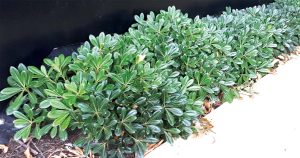“With so much you can do in June, there’s no need for gardeners to hibernate during winter! From planting flowering plants to growing delicious veggies, you can keep your kitchen well stocked with healthy homegrown ingredients and brighten your outdoor spaces.” says Angie Thomas, Horticulture Consultant to Yates.
Angie shares her top tips on what to plant during winter:
Hellebores – Molly and Penny
Hellebores, also known as ‘winter roses’, are perfect for full to partly shaded spots and are a delight during the cooler months of the year, putting on a prolific display of large, bell, shaped flowers throughout winter.
Hellebore ‘Molly’s White’ and ‘Penny’s Pink’ are two gorgeous hellebores. Although they look delicate, they’re tough plants that don’t require much water once established. Feed hellebores every six weeks during periods of new foliage growth and flowering with an organic soil improver and plant fertiliser.
Alyssum – Carpet of Snow
Alyssum is commonly grown as a pretty filler in amongst other flowers in pots and garden beds. Alyssum can also take centre stage and make a gorgeous border plant on its own.
Carpet of Snow is a long lasting and hardy annual that is smothered in masses of tiny honey scented white flowers. In warm and temperate zones during June, it’s as easy as scattering seed direct where they are to grow and only just covering with 2mm of loose soil or seed raising mix. Firm down and keep the soil moist while the seeds germinate.
Argyranthemums – Madeira
If you’re after vibrant colour during winter, then look out for the Madeira range of argyranthemum daisies including richly coloured ‘Red Double’ and very pretty ‘Pink Crested’.
The Madeira range are quick to grow and will reach up to 75 cm high. They’re hardy perennials that like growing in a full sun position. To keep them healthy, I recommend regularly feeding with a fast acting liquid fertiliser that’s boosted with additional potassium to promote lots of gorgeous flowers.
Bidens – Beautiful burnt orange
Bidens are a group of hardy plants in the daisy family that can bring bright warm colours into the garden. Bidens ‘Campfire’ is a fast growing variety with masses of bronze-red flowers on a plant that grows to around 25 cm tall and wide. Perfect for growing in sunny garden beds, borders and also containers.
When planting Bidens ‘Campfire’ into pots or hanging baskets, start with a good quality potting mix and feed each week with a plant food that’s boosted with extra potassium, the key nutrient that encourages flowering.
Roses – Bare rooted
Winter is the perfect time to get planting bare rooted roses. It is important not to let the roots of your bare rooted rose dry out. As soon as your rose arrives home from the garden centre or via mail order, place it in a bucket of water for a few hours before planting.
For established bush roses, during winter while they’re leafless, prune down to knee height. Once pruned, I recommend to spray your roses with lime sulfur to help break the rose pest and disease cycle.
Camellias – Shade loving
There is nothing like camellia to brighten your backyard or patio during the cold winter months. There are camellias for both sun and shade and they’re hardy once established.
To promote healthy leaf growth and a fantastic flowering season, apply an organic based flowering plant food every eight weeks.
Spinach – Winter Queen
Staying healthy in winter is much easier when you have your very own spinach growing in your backyard. I recommend planting Winter Queen Spinach – a variety that is quick to grow and provides large, tasty green leaves.
Spinach loves sunlight, however can also tolerate a small amount of shade. Ensure you constantly feed spinach with a plant food that is rich in nitrogen – the key nutrient to promote leaf growth.
Peas – Greenfeast
Sow your own peas this winter and enjoy the satisfaction of shelling peas. Dwarf varieties of peas are great for the home veggie patch as they don’t take up too much space.
Greenfeast peas produce large pods filled with tender sweet peas and are ready to harvest around 14 weeks after sowing. Sow seeds two and a half cm deep in a sunny veggie patch with well-drained soil that’s been enriched with organic fertiliser.
For more gardening inspiration, ideas and advice go to www.yates.com.au.










